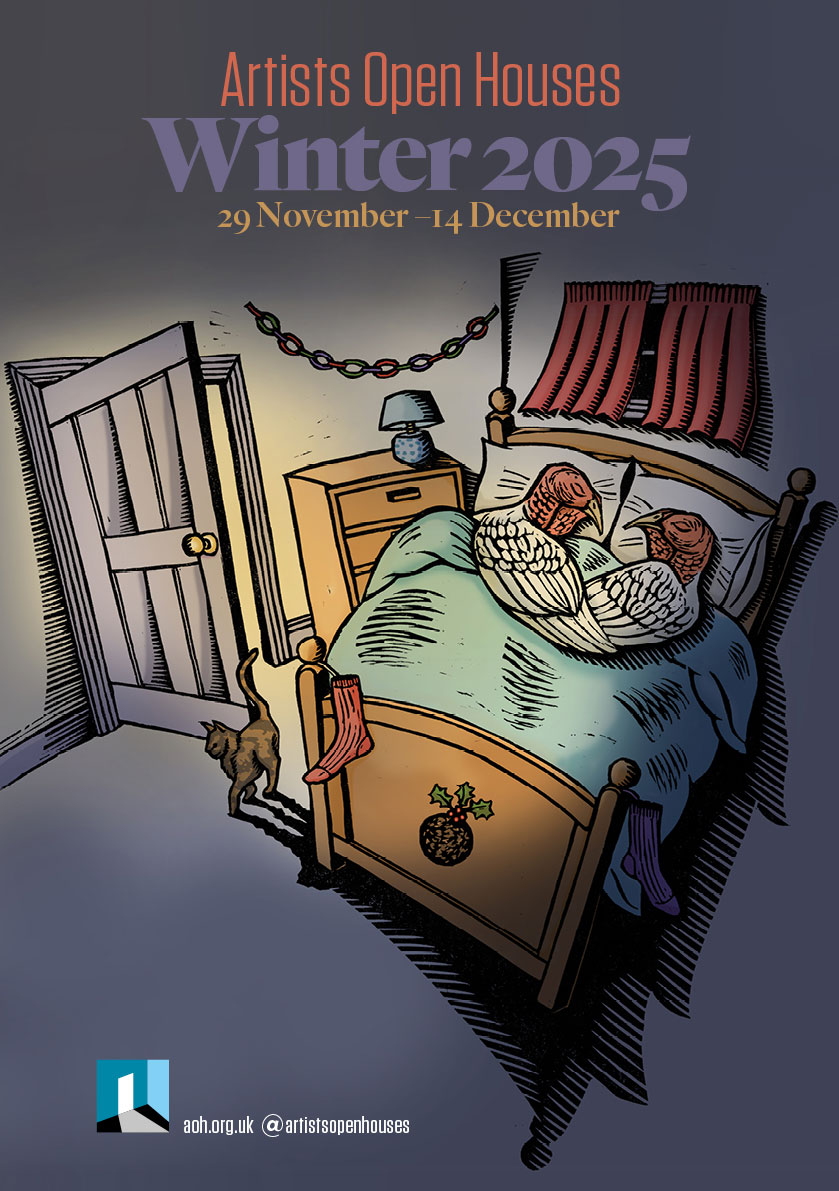Sam Hewitt tells us about his working practice, time travel, telepathy and looking for the simplest form of things
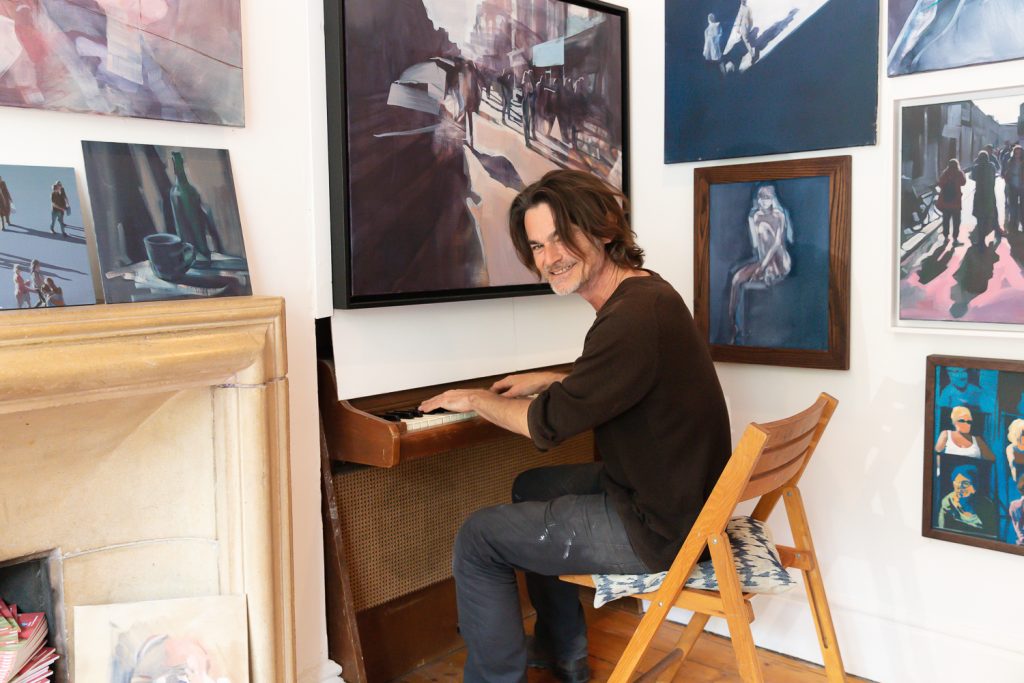
Hi Sam
Your work is really intriguing and, on the surface, may be seen as purely about people and their shadows. First of all, can you tell is how you photograph and select the people you paint?
Ha, I wonder if that is the hardest and most pertinent question you could ask. I have stopped photographing people over the last three years. There used to be a moment when I would take the picture. The sun, the architecture, the ground surface and the way people positioned themselves would add up to the moment when I chose to take a photograph. This happens when it happens and the paintings know exactly why. When I first started this, I had to take the film to a shop and wait before I could see the results. I thus became sensitised to the quality of that choosing moment – something I’ve noticed digital photography numbing through sheer quantity of images.
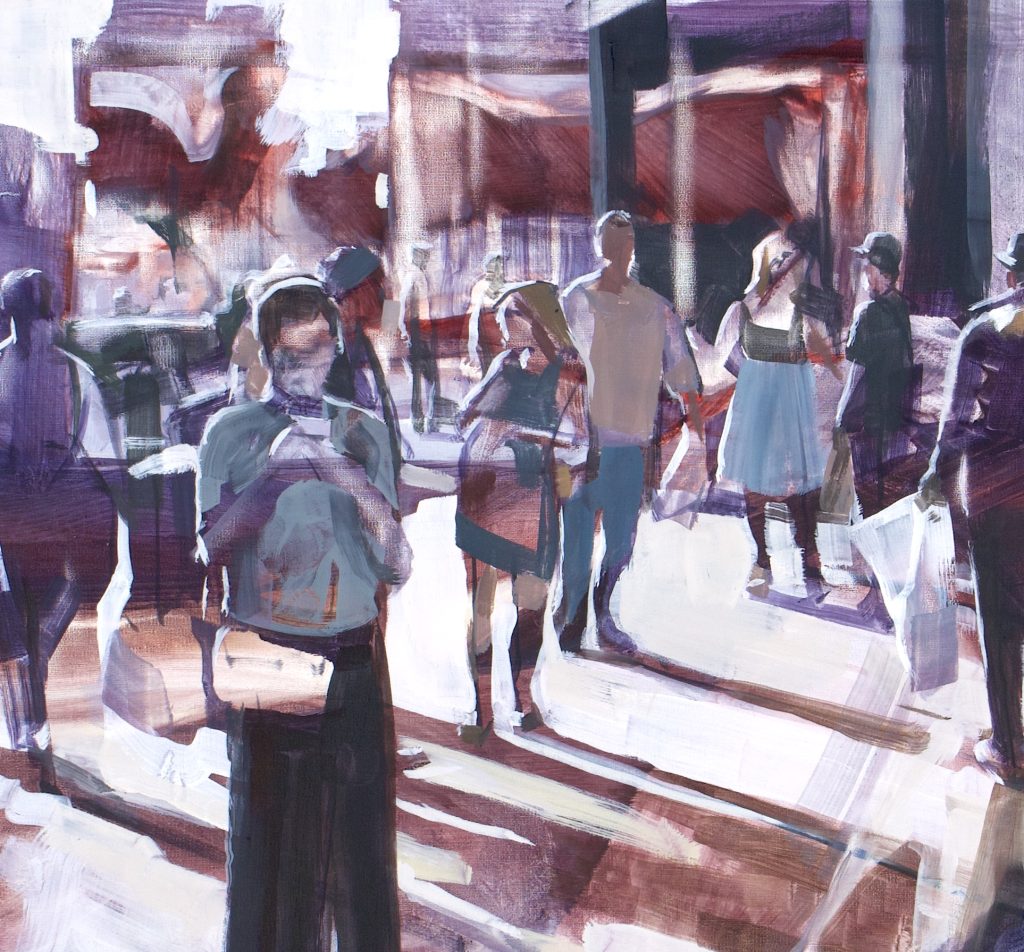
Withdrawal – Sam Hewitt
The conditions for me to take such photos have been absent since March 2020. A set of counter-social behaviours were made obligatory for people through instructions from global and national authority and infrastructure. In addition, behavioural nudging became an established method of government. All brand new stuff for homo sapiens and highly questionable (in that big questions are raised). This happened at the same time as the introduction of several new modes of digital communication which people were encouraged to use as replacements for the shattered social bonds. The implications of these changes are only just starting to manifest and as far as my work is concerned, it’s the most important area of study. Suffice it to say, my subject, the urban human changed permanently overnight.
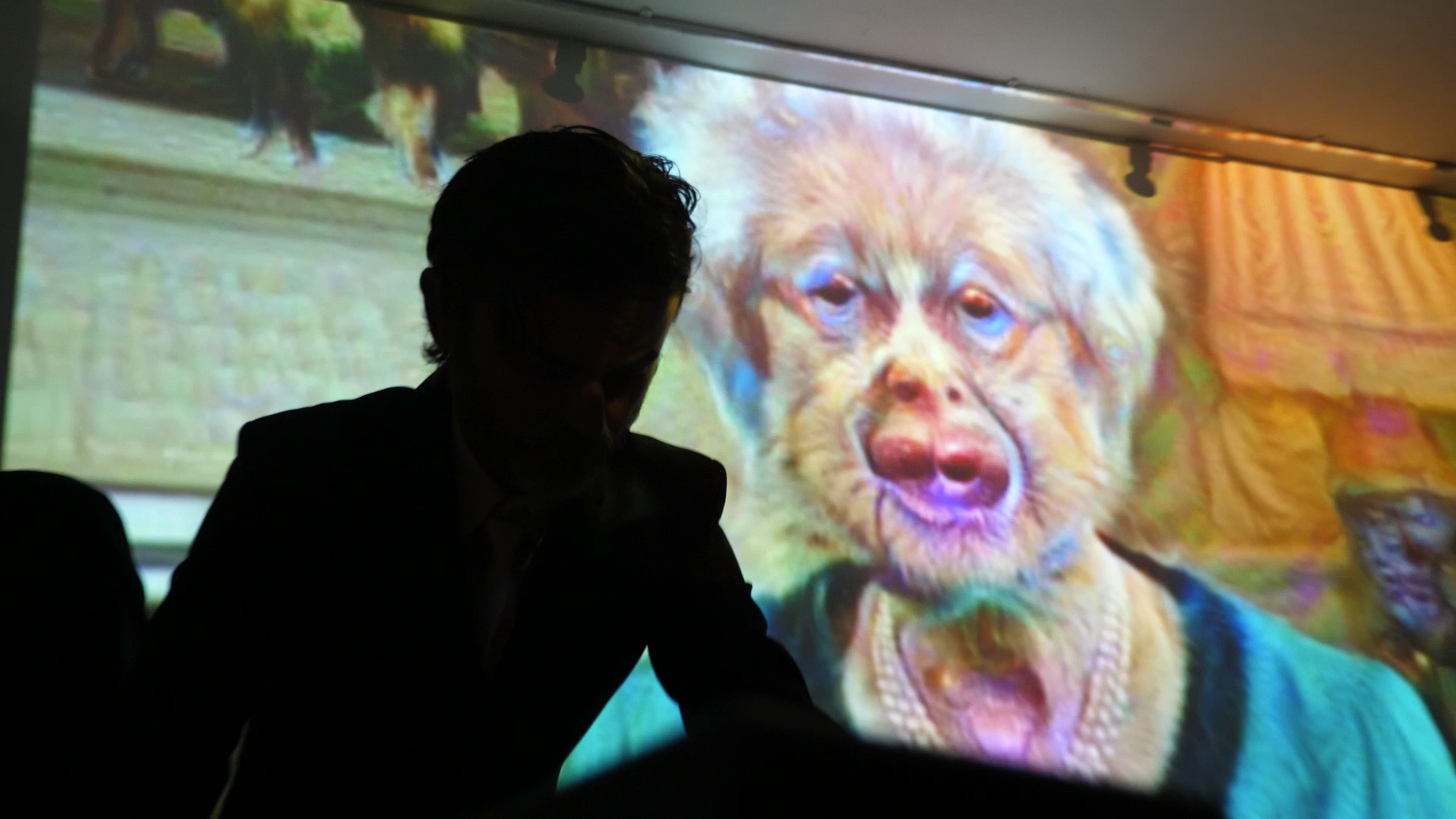 Operation Mindf**k 2018 Phoenix Gallery
Operation Mindf**k 2018 Phoenix Gallery
As a result I have deepened my investigation into human behaviour and our interactions with digital media. This is a direct continuation of my work of the last twelve years in collaboration with the artist Shardcore in which we built interactive digital installations under the name The Fortunecats. An overview some of these works is at fortunecatproductions.com. The results of those wide-ranging, experimental, public artworks have fed into my paintings over the years and now form the basis of my whole practice.
Thanks to that grounding in the disciplines of psychology, behaviourism and digital media I have taken my reluctance to paint recent human behaviour very seriously. I’m afraid I don’t yet have a clear answer. All I can say is that I’m paying very close attention armed with fiercely honed technique and a comprehensive understanding of why people behave in the ways they do. This engenders compassion and that is the basis on which I’ve always looked and painted.
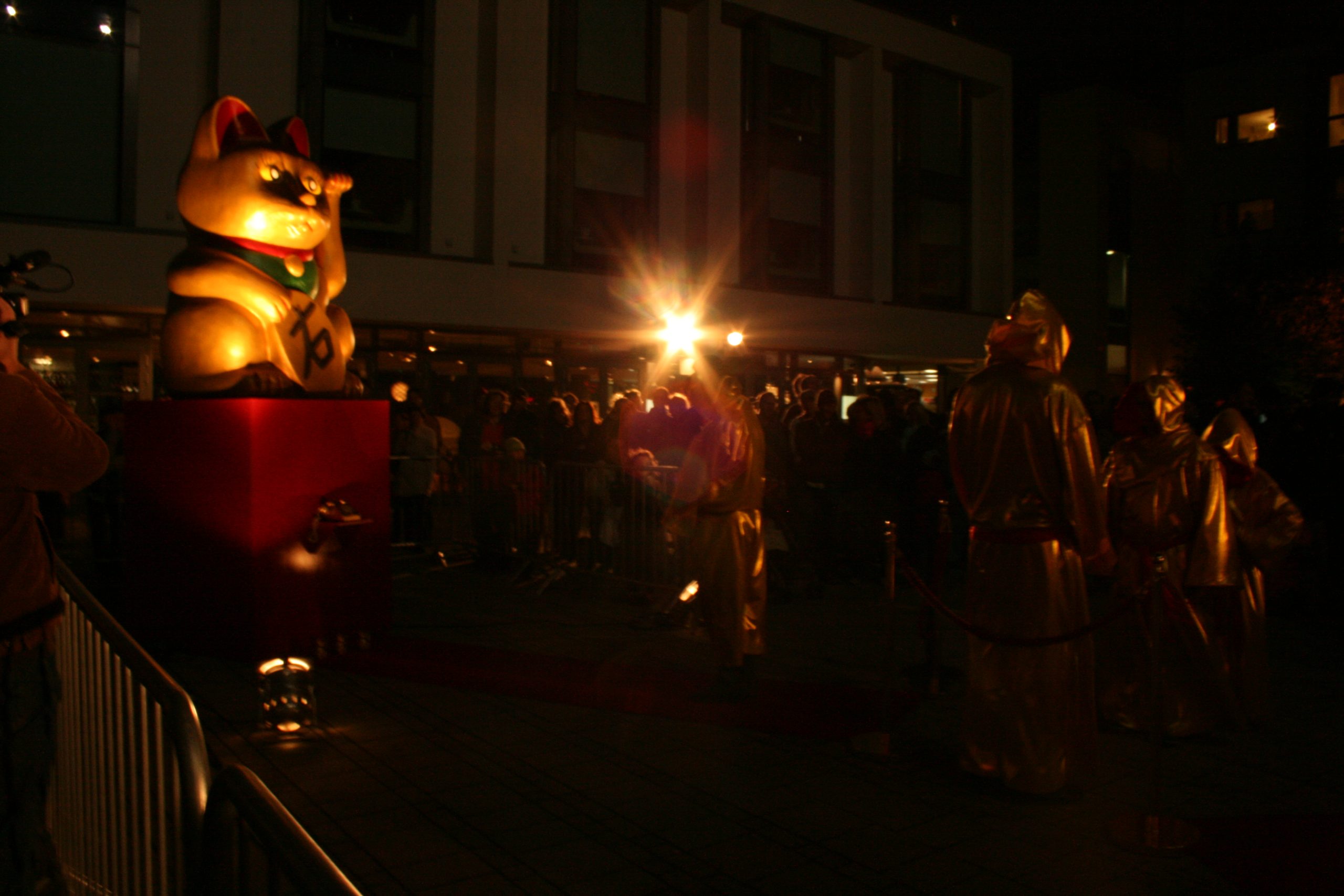 The Fortune Cats 2009 Jubilee Square
The Fortune Cats 2009 Jubilee Square
How have your visits to Marrakesh influenced the way you work?
Visiting Marrakech in 2008 I discovered an urban landscape in which very different rules apply to public behaviour. Much older and saner rules than I was used to. I took about a dozen photographs of the huge open square from a high rooftop cafe. These started a series of paintings that became very popular. Charles Dance has one of the big works from that first series. He said he liked it because the people looked like characters entering and leaving a stage. As I worked on this subject and found other open locations with a high vantage point where people gathered, I began to realise that I was projecting onto each person as if they were characters and, as I explored this, I started to see these projections as analogous to the appearance of dream characters. In reading the paintings as I might read a dream (everything in the dream is an aspect of myself) I realised they told me a story from my internal drama. I think this is what moves this strand of my painting into the realm of art and why people respond to them in the way they do.
You have talked before about how your work has other layers of meaning and that your paintings are about you own ‘shadow behaviour’. Can you explain this a little more?
If sunlight is the conscious mind falling on the objects of thought, feeling and perception, then the shadows are the unconscious associations and implications of those objects. In my layered works, the collisions between the layers open up that shadow realm and offer the viewer an opportunity to examine their own habits of looking. We tend to screen out vast quantities of information from our surroundings and move around the city in a state of fascination with our inner preoccupations. This promotes very active assumptions about the content of our environment which appear in these works as acceptable street scenes constructed of very few brush marks and vast tracts of painted information from the layers beneath. This allows me to point at the possibility, rife in other forms of media, of introducing ideas into the Unconscious outside the awareness of the viewer, which can percolate over many years.
My layered works have so many connected ideas in them I sometimes find it overwhelming. When there is a collision of painted thought across two or more plains of intention I encounter a voice which is more intelligent than I can find within myself consciously. Jung would call this the Collective Unconscious. I have noticed through this kind of practice that time-travel and telepathy become commonplace.
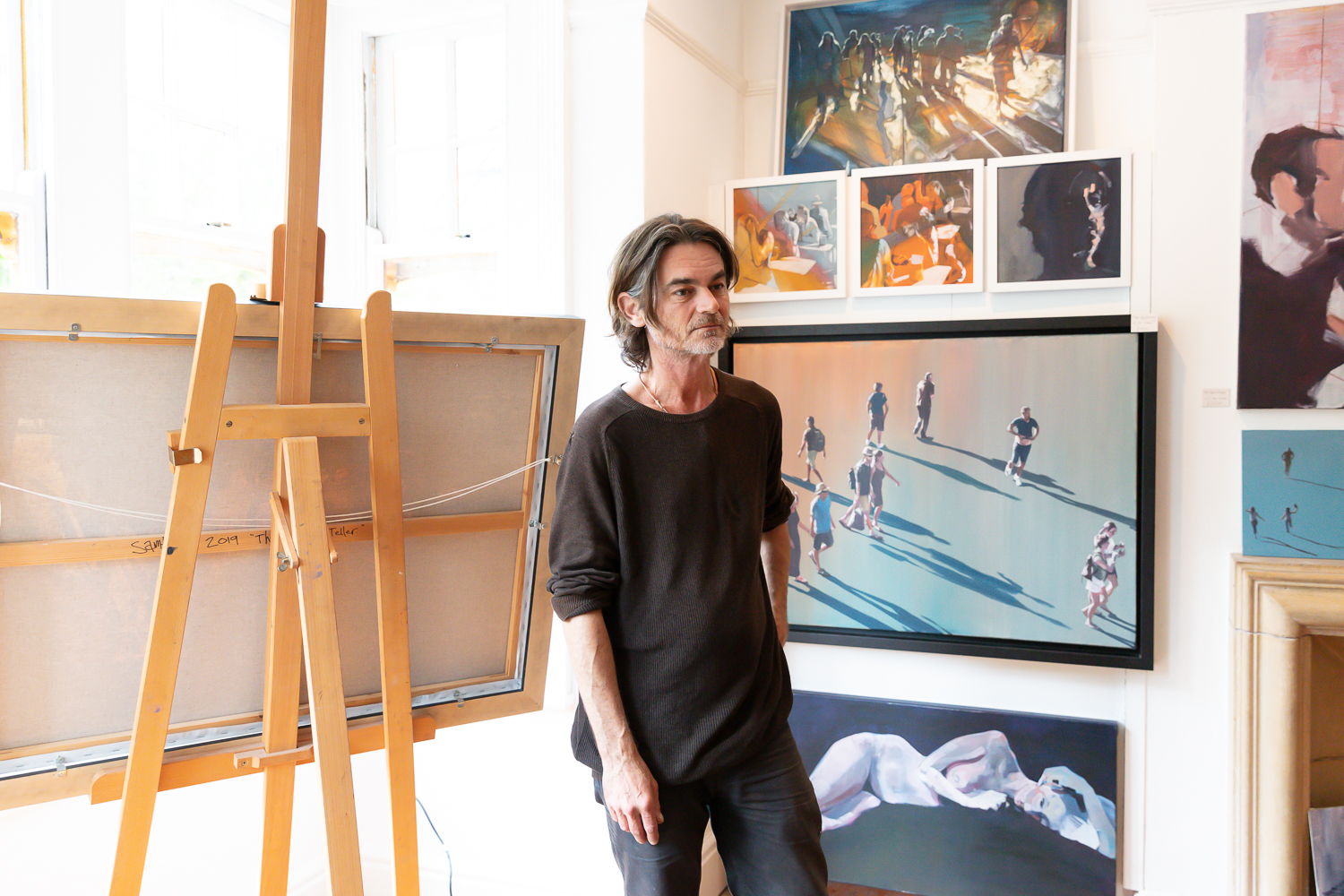
You paint using a very limited range of four colours – could you tell us why?
I use four very specific colours. Cadmium red and yellow. Daler’s Monestial blue and an opaque white. I do this for many reasons, none of which were apparent to me when I started doing it. For example, there are four Jungian Archetypes that have been used very successfully as the architectural foundation for transformational therapies. These are each represented as a colour in ancient cultures so my paintings are all grounded in the notion of life as a weaving of these four threads. More prosaically, I am always looking for the simplest form of things. Using four colours means that a smaller number of choices have been made by someone else before I start to mix them and have to deal with the infinite variability that entails.

Your house front, on the other hand, is really brightly coloured – is there a deliberate interior exterior divergence here?
No, nothing artistically deliberate. Painting the house was born out of a desire to slow the cars down by making the drivers interested or reminding them they were driving past the houses of people not robots, some of whom were children. It didn’t work of course, the tin box at speed is our alone time and the last thing we want to consider is the existence of others. I suppose it’s a bit like the buskers all getting big amps so as to blast through the smartphone hypnosis with loud sound. I’m trying to reach the anxious motorist with loud colour.
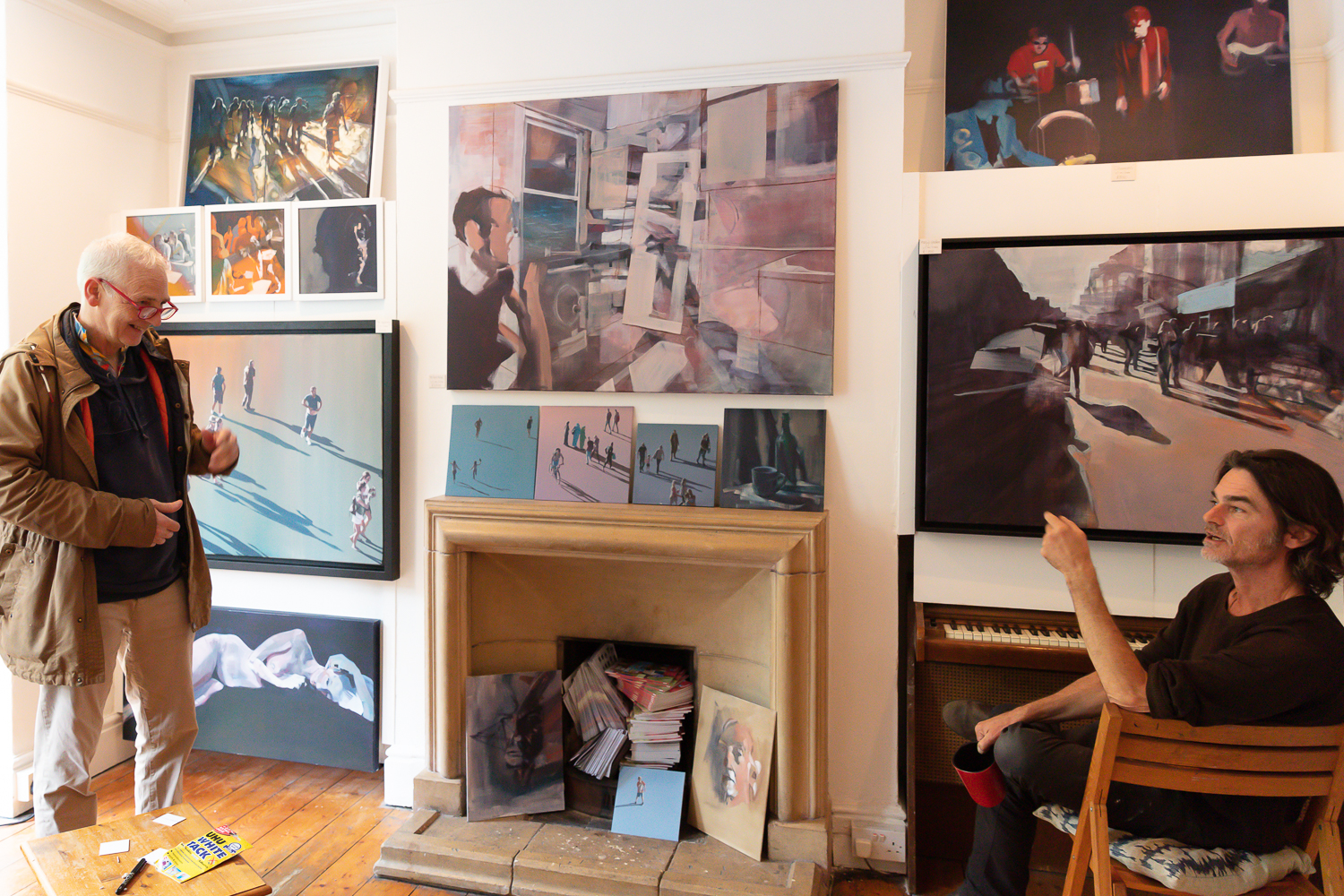
Your paintings are in many collections both public and private, can you tell us about these?
I’m not in any prestigious collections that I’m aware of except the Hiscox. I have deliberately avoided moving into a higher price bracket because I am much more interested in people connecting with uncompromised work than in making money or in being embraced by the art world, I am comfortable with my outsider status and the paintings know what they are. I have low overheads on purpose. My paintings are in hundreds of private collections worldwide and I have a strong sense that those people have an ever-deepening relationship with them that is, for me, an essential part of the process.

What are you most hoping for in taking part in AOH and opening your house to visitors?
I mostly did the open house because I had to clear the junk from my house, the unsold work from my studio and the cobwebs from my interpersonal skills. That in itself has left me feeling much lighter and more open to my next phase of work. I took £10,000 in the first two weekends with plenty of work left to fill the show. I don’t use any social media and my website is completely out of date so I see this open house as a challenge to the assumption that success happens via the screen. Here is my statement from the AOH website: The art of painting seems to involve the development of objects which are intended to be looked at for many years. At best, these objects continue to draw the eye, spark the imagination, intrigue the puzzle-solving mind and even to stir or heal the soul. In good work, like with fine wine, these qualities deepen over time. Conversely, the screen interface is designed for a momentary experience; prolonged viewing carries diminishing returns and appears detrimental to health. It is therefore inappropriate in my opinion to involve the use of screens at any stage of the viewing process unless the art being viewed is screen art, ie. work which accounts for the actions of the media involved.
All of my actions of the last three years have been about trying to find a way to carry on painting. The open house is just such an action and I hoped to encounter something that would light said way. In talking to the people who have visited so far, I’m hearing excitement about what I’m most interested in, the experiments at the frontier of my practice. This adds significantly to the pile of reasons to keep going.
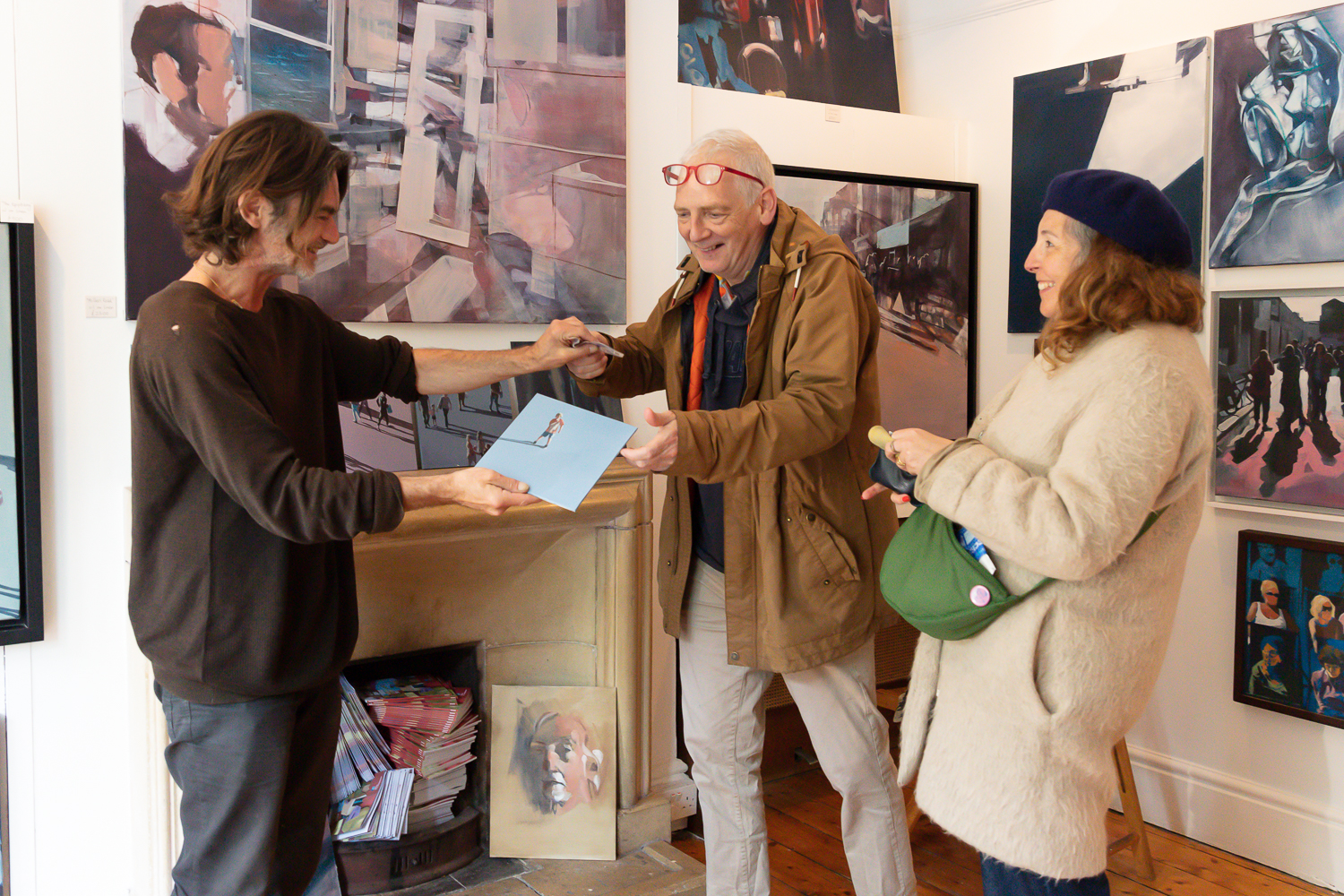
It there anything else you would like to tell us?
I’d like to thank you for giving me an outlet for these thoughts. I’m writing them on an Alphasmart 3000 – 90s tech, no meta-data, only the data I choose to share by pressing each key, single-function portable word-processor. It’s the future I tell you.
I am currently showing some work at Cameron Contemporary in Hove including two large works (“Surplus Enjoyment” and “Brighton Crucifixion”) which are my most important to date in terms of their personal and political significance and as technical achievements.
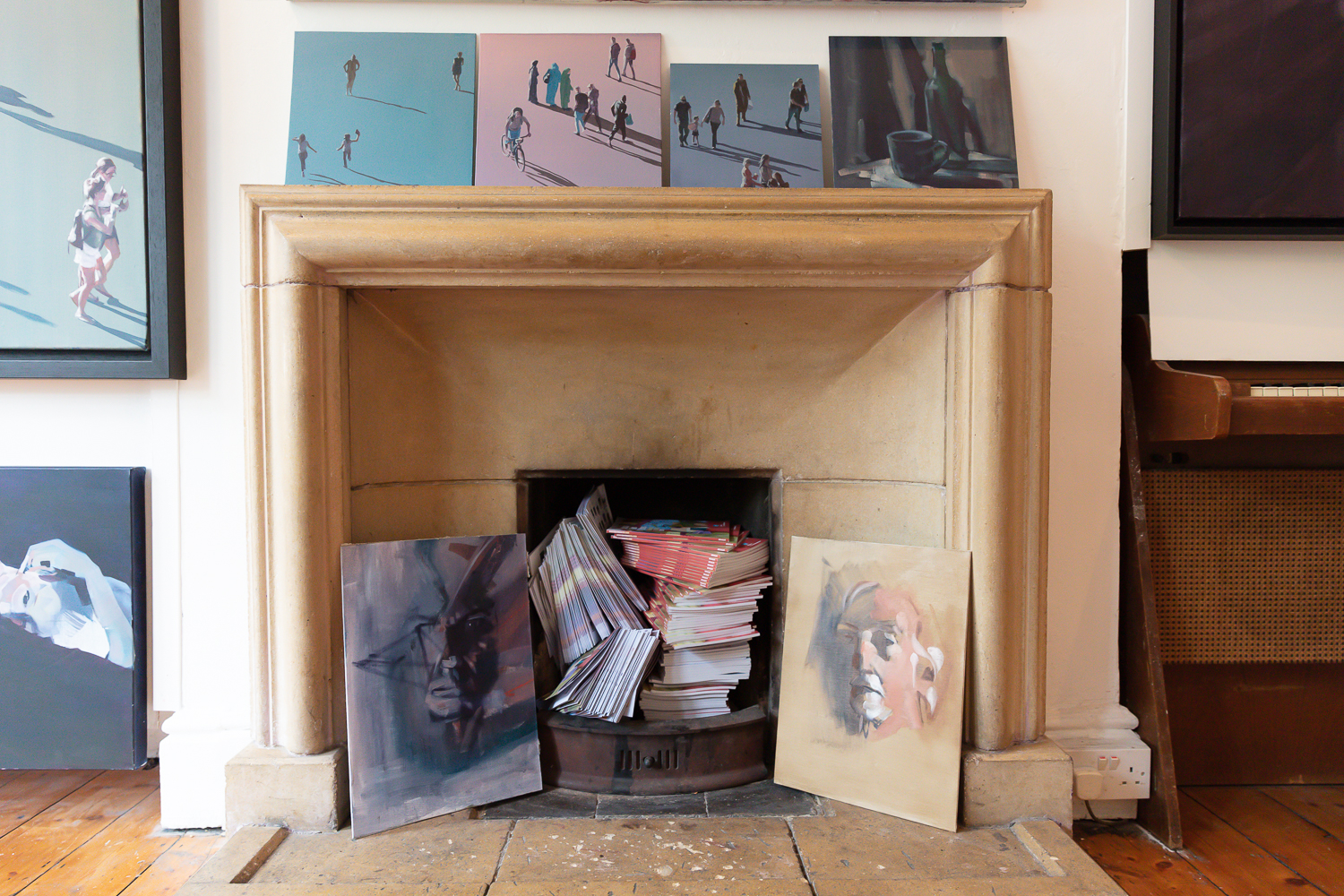
Visit Sam’s Open House at:
SAM HEWITT’S HOUSE
47 Millers Road, Brighton, BN1 5NQ
On the Dyke Road Trail
